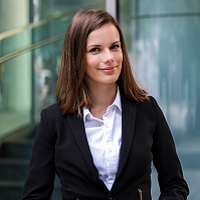Enhancing Cancer Treatment: KEYTRUDA and LENVIMA Together

Innovative Approaches to Treatment
With the objective of enhancing patient care in the battle against serious diseases, innovative therapies are coming together. In the field of cancer treatment, exciting findings have been revealed, particularly regarding the partnership between KEYTRUDA (pembrolizumab) and LENVIMA (lenvatinib) alongside transarterial chemoembolization (TACE) for those facing hepatocellular carcinoma (HCC).
Insights from Recent Clinical Trials
The interim results from the Phase 3 LEAP-012 trial have shed light on significant advancements in treatment options for patients with unresectable, non-metastatic HCC. The combination of KEYTRUDA, a PD-1 inhibitor, and LENVIMA, a receptor tyrosine kinase inhibitor, used together with TACE, has demonstrated promising results in enhancing progression-free survival (PFS).
Statistical Improvements in PFS
The data indicates that after a thorough follow-up, the combination of KEYTRUDA and LENVIMA led to a 34% reduction in the risk of disease progression or death compared to TACE alone. This marks a notable advancement in treatment options. The median PFS jumped to 14.6 months with the combination therapy, up from 10 months with TACE by itself. While overall survival (OS) data isn't fully definitive yet, there's a clear trend that suggests improved outcomes for patients receiving this combination therapy.
Expert Opinions on the Findings
Oncology experts have shared their positive reactions regarding these results. Dr. Josep Llovet pointed out the pressing need for new strategies to extend survival for HCC patients, considering its high occurrence worldwide. He portrayed the trial’s findings as a hopeful indicator that the KEYTRUDA and LENVIMA combination could greatly benefit those with unresectable cancer.
Addressing Rising Global Cancer Rates
Dr. Gregory Lubiniecki remarked on the concerning increase in HCC cases, predicting that the number will escalate significantly over the next twenty years. Developing new treatment options like this could be vital for helping patients whose choices are limited.
Understanding Clinical Risks and Side Effects
Even with the promising results, it's important to consider the safety profiles of these combination therapies. The rate of treatment-related adverse events (TRAEs) was higher for patients receiving the combination therapy, with an incidence of 98.7% compared to 84.6% for those undergoing TACE alone. There was also a notable difference in serious adverse events, indicating more health issues with the combined therapy. Ongoing monitoring and additional clinical trials will be crucial in refining protocols to ensure safety and efficacy.
Exploring Treatment Approvals
The regulatory environment shows encouraging developments. LENVIMA is already approved for HCC treatment in various countries, and KEYTRUDA has its own set of approved indications. Merging these treatments offers new opportunities for comprehensive patient care.
The Future of Cancer Treatment
The LEAP-012 trial may set a new benchmark in cancer treatment methodologies. The collaboration between Merck and Eisai reflects a joint commitment to expanding the frontiers of oncological care, with the goal of targeting various cancer types through ongoing research.
Dedication to Research and Development
Through the LEAP clinical program, Merck and Eisai are not only advancing key therapies but also have the potential to transform the treatment landscape for numerous cancers. They are actively investigating many tumor types, aiming to achieve breakthroughs that meet patient needs.
Conclusion: A New Chapter in Cancer Care
The joint exploration of KEYTRUDA and LENVIMA in combination with TACE highlights the effectiveness of blending innovative therapies to combat cancer. As research continues, it holds the promise of future treatments that not only extend survival but also enhance the quality of life for patients around the globe, particularly for those with limited options.
Frequently Asked Questions
What is the purpose of combining KEYTRUDA and LENVIMA?
The combination aims to improve treatment outcomes for unresectable, non-metastatic hepatocellular carcinoma, as demonstrated in recent clinical trials.
What are the reported benefits of this treatment combination?
This combination therapy has shown statistically significant improvements in progression-free survival when compared to TACE alone.
What does the safety profile look like for the combination therapy?
Although the combination might boost efficacy, it has a higher incidence of adverse events compared to TACE by itself, which requires thorough monitoring.
How have experts reacted to the trial results?
Experts are optimistic about the trial results, viewing them as a crucial step in addressing the increasing rates of liver cancer.
What future developments can we expect?
Future studies will focus on refining treatment protocols and investigating more applications for the KEYTRUDA and LENVIMA combination across different tumor types.
About The Author
Contact Kelly Martin privately here. Or send an email with ATTN: Kelly Martin as the subject to contact@investorshangout.com.
About Investors Hangout
Investors Hangout is a leading online stock forum for financial discussion and learning, offering a wide range of free tools and resources. It draws in traders of all levels, who exchange market knowledge, investigate trading tactics, and keep an eye on industry developments in real time. Featuring financial articles, stock message boards, quotes, charts, company profiles, and live news updates. Through cooperative learning and a wealth of informational resources, it helps users from novices creating their first portfolios to experts honing their techniques. Join Investors Hangout today: https://investorshangout.com/
The content of this article is based on factual, publicly available information and does not represent legal, financial, or investment advice. Investors Hangout does not offer financial advice, and the author is not a licensed financial advisor. Consult a qualified advisor before making any financial or investment decisions based on this article. This article should not be considered advice to purchase, sell, or hold any securities or other investments. If any of the material provided here is inaccurate, please contact us for corrections.
